Experimental Study on Micro-Grinding of Ceramics for Micro-Structuring
Abstract
:1. Introduction
2. Experimental Setup
3. Results
3.1. Machining Characteristics of Zirconia
Tool Wear
3.2. Machining Characteristics of Alumina
4. Conclusions
Author Contributions
Funding
Institutional Review Board Statement
Informed Consent Statement
Conflicts of Interest
References
- Júnior, M.G.; de Angelo Sanchez, L.E.; França, T.V.; Fortulan, C.A.; da Silva, R.H.L.; Foschini, C.R. Analysis of the tool nose radius influence in the machining of a green ceramic material. Int. J. Adv. Manuf. Technol. 2019, 105, 3117–3125. [Google Scholar] [CrossRef]
- Jia, D.; Li, C.; Zhang, Y.; Yang, M.; Zhang, X.; Li, R.; Ji, H. Experimental evaluation of surface topographies of NMQL grinding ZrO2 ceramics combining multiangle ultrasonic vibration. Int. J. Adv. Manuf. Technol. 2019, 100, 457–473. [Google Scholar] [CrossRef]
- Kwak, J.-S.; Kwak, T.-S. Review of Technology Trends for Ceramics Removal-Machining. J. Korean Soc. Precis. Eng. 2013, 30, 1227–1235. [Google Scholar] [CrossRef]
- Shackelford, J.F.; Doremus, R.H. Ceramic and Glass Materials; Springer: Boston, MA, USA, 2008. [Google Scholar] [CrossRef]
- Zhang, Z.Y.; Peng, H.M.; Yan, J.W. Micro-cutting characteristics of EDM fabricated high-precision polycrystalline diamond tools. Int. J. Mach. Tool Manuf. 2013, 65, 99–106. [Google Scholar] [CrossRef]
- Rao, R.R.; Mariappan, L.; Roopa, H.N. Fabrication of Micro-featured Shapes of Alumina Ceramics. Procedia Mater. Sci. 2014, 5, 2595–2604. [Google Scholar] [CrossRef] [Green Version]
- Romanus, H.; Ferraris, E.; Bouquet, J.; Reynaerts, D.; Lauwers, B. Micromilling of Sintered ZrO2 Ceramic via cBN and Diamond Coated Tools. Procedia CIRP 2014, 14, 371–376. [Google Scholar] [CrossRef]
- Gartner, E.; Polise, V.; Tagliaferri, F.; Palumbo, B. Laser Micro Machining of Alumina by a Picosecond Laser. J. Laser Micro/Neuroeng. 2018, 13, 76–84. [Google Scholar] [CrossRef]
- Kizaki, T.; Ito, Y.; Tanabe, S.; Kim, Y.; Sugita, N.; Mitsuishi, M. Laser-assisted Machining of Zirconia Ceramics using a Diamond Bur. Procedia CIRP 2016, 42, 497–502. [Google Scholar] [CrossRef]
- Ferraris, E.; Reynaerts, D.; Lauwers, B. Micro-EDM process investigation and comparison performance of Al3O2 and ZrO2 based ceramic composites. CIRP Ann. 2011, 60, 235–238. [Google Scholar] [CrossRef]
- Banu, A.; Ali, M.Y.; Abd Rahman, M. Micro-electro discharge machining of non-conductive zirconia ceramic: Investigation of MRR and recast layer hardness. Int. J. Adv. Manuf. Technol. 2014, 75, 257–267. [Google Scholar] [CrossRef]
- Rabiey, M.; Jochum, N.; Kuster, F. High performance grinding of zirconium oxide (ZrO2) using hybrid bond diamond tools. Cirp Ann.-Manuf. Technol. 2013, 62, 343–346. [Google Scholar] [CrossRef]
- Dai, J.; Su, H.; Zhou, W.; Yu, T.; Ding, W.; Zhang, Q.; Zheng, Y. Finite element implementation of the tension-shear coupled fracture criterion for numerical simulations of brittle-ductile transition in silicon carbide ceramic grinding. Int. J. Mech. Sci. 2018, 146–147, 211–220. [Google Scholar] [CrossRef]
- Ferraris, E.; Vleugels, J.; Guo, Y.; Bourell, D.; Kruth, J.P.; Lauwers, B. Shaping of engineering ceramics by electro, chemical and physical processes. CIRP Ann. 2016, 65, 761–784. [Google Scholar] [CrossRef]
- Katahira, K.; Takesue, S.; Komotori, J.; Yamazaki, K. Micromilling characteristics and electrochemically assisted reconditioning of polycrystalline diamond tool surfaces for ultra-precision machining of high-purity SiC. CIRP Ann.-Manuf. Technol. 2014, 63, 329–332. [Google Scholar] [CrossRef]
- Subhash, G.; Klecka, M. Ductile to Brittle Transition Depth During Single-Grit Scratching on Alumina Ceramics. J. Am. Ceram. Soc. 2007, 90, 3704–3707. [Google Scholar] [CrossRef]
- Bian, R.; Ferraris, E.; Ynag, Y.F.; Qian, J. Experimental Investigation on Ductile Mode Micro-Milling of ZrO2 Ceramics with Diamond-Coated End Mills. Micromachines 2018, 9, 127. [Google Scholar] [CrossRef] [Green Version]
- Bian, R.; He, N.; Ding, W.Z.; Liu, S.Q. A study on the tool wear of PCD micro end mills in duc-tile milling of ZrO2 ceramics. Int. J. Adv. Manuf. Technol. 2017, 92, 2197–2206. [Google Scholar] [CrossRef]
- Masuzawa, T.; Fujino, M.; Kobayashi, K.; Suzuki, T.; Kinoshita, N. Wire Electro-Discharge Grinding for Micro-Machining. Cirp Ann.-Manuf. Technol. 1985, 34, 431–434. [Google Scholar] [CrossRef]
- Nakamoto, K.; Katahira, K.; Ohmori, H.; Yamazaki, K.; Aoyama, T. A study on the quality of micro-machined surfaces on tungsten carbide generated by PCD micro end-milling. Cirp Ann.-Manuf. Technol. 2012, 61, 567–570. [Google Scholar] [CrossRef]
- Telle, R. Chapter 1—Properties of Ceramics. In Handbook of Ceramics Grinding and Polishing, 2nd ed.; Marinescu, I.D., Doi, T.K., Uhlmann, E., Eds.; William Andrew Publishing: Boston, MA, USA, 2015; pp. 1–49. [Google Scholar] [CrossRef]
- Cho, Y.H.; Seo, Y.S.; Moon, I.Y.; Kim, B.H.; Park, K. Facile fabrication of superhydrophobic poly(methyl methacrylate) substrates using ultrasonic imprinting. J. Micromech. Microeng. 2013, 23, 055019. [Google Scholar] [CrossRef]
- Hwang, J.; Cho, Y.H.; Park, M.S.; Kim, B.H. Microchannel Fabrication on Glass Materials for Microfluidic Devices. Int. J. Precis. Eng. Manuf. 2019, 20, 479–495. [Google Scholar] [CrossRef]
- Maeng, S.; Lee, P.A.; Kim, B.H.; Min, S. An Analytical Model for Grinding Force Prediction in Ultra-Precision Machining of WC with PCD Micro Grinding Tool. Int. J. Precis. Eng. Manuf.-Green Technol. 2020, 7, 1031–1045. [Google Scholar] [CrossRef]
- Morgan, C.J.; Vallance, R.R.; Marsh, E.R. Micro machining glass with polycrystalline diamond tools shaped by micro electro discharge machining. J. Micromech. Microeng. 2004, 14, 1687–1692. [Google Scholar] [CrossRef]
- Pratap, A.; Patra, K.; Dyakonov, A.A. A comprehensive review of micro-grinding: Emphasis on toolings, performance analysis, modeling techniques, and future research directions. Int. J. Adv. Manuf. Technol. 2019, 104, 63–102. [Google Scholar] [CrossRef]
- Li, X.; Wang, Y.; Liu, Y.; Zhao, F. Research on Shape Changes in Cylinder Electrodes Incident to Micro-EDM. Adv. Mater. Sci. Eng. 2019, 2019, 8087462. [Google Scholar] [CrossRef] [Green Version]
- Bissacco, G.; Hansen, H.N.; Slunsky, J. Modelling the cutting edge radius size effect for force prediction in micro milling. CIRP Ann. 2008, 57, 113–116. [Google Scholar] [CrossRef]
- Malekian, M.; Mostofa, M.G.; Park, S.S.; Jun, M.B.G. Modeling of minimum uncut chip thickness in micro machining of aluminum. J. Mater. Process. Technol. 2012, 212, 553–559. [Google Scholar] [CrossRef]
- Zhang, Y.-N.; Lin, B.; Liu, J.-J.; Song, X.-F.; Key, J.Y. An Experimental Study on Mechanical Modeling of Ceramics Based on Microstructure. Appl. Sci. 2015, 5, 1337–1349. [Google Scholar] [CrossRef] [Green Version]
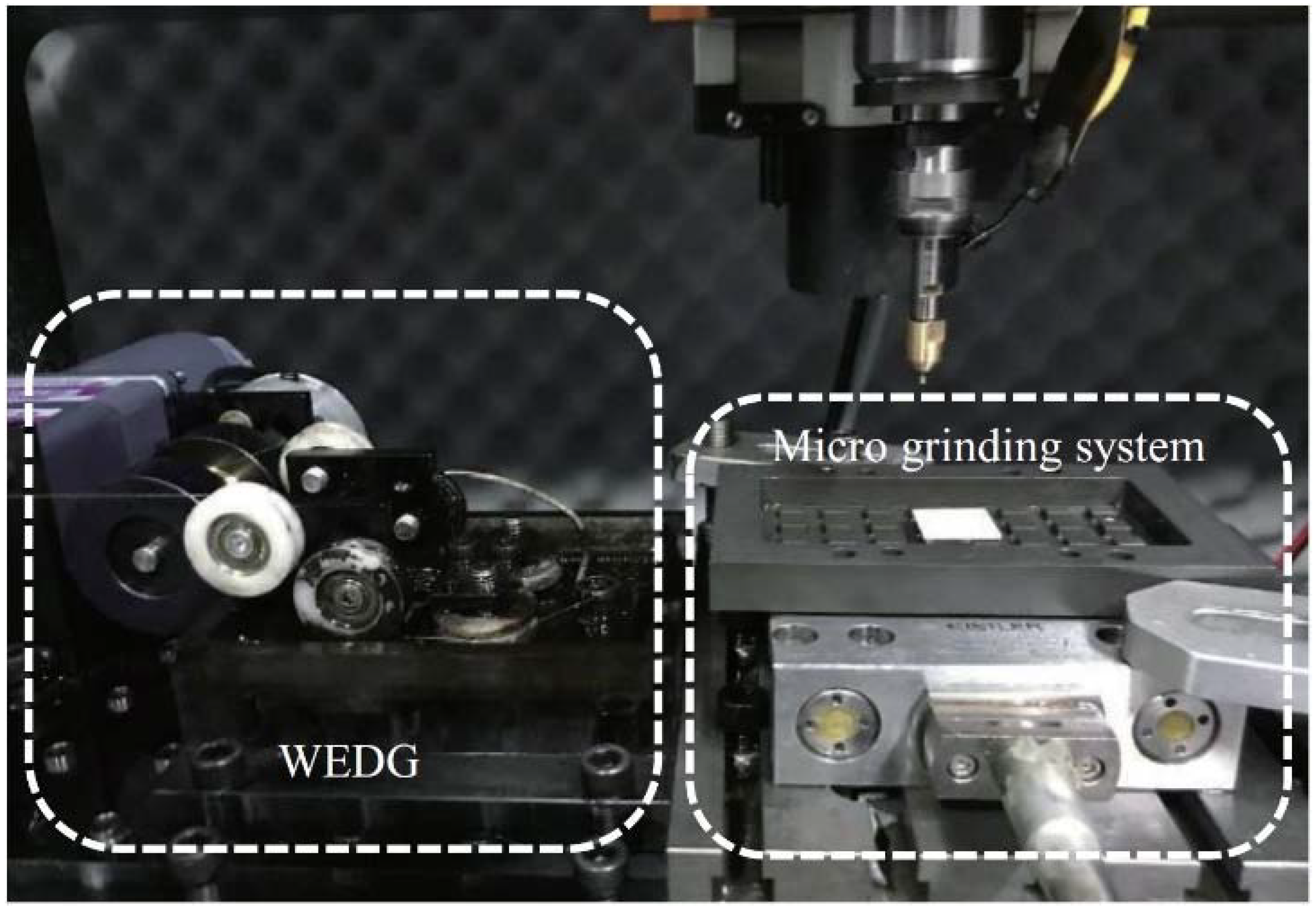
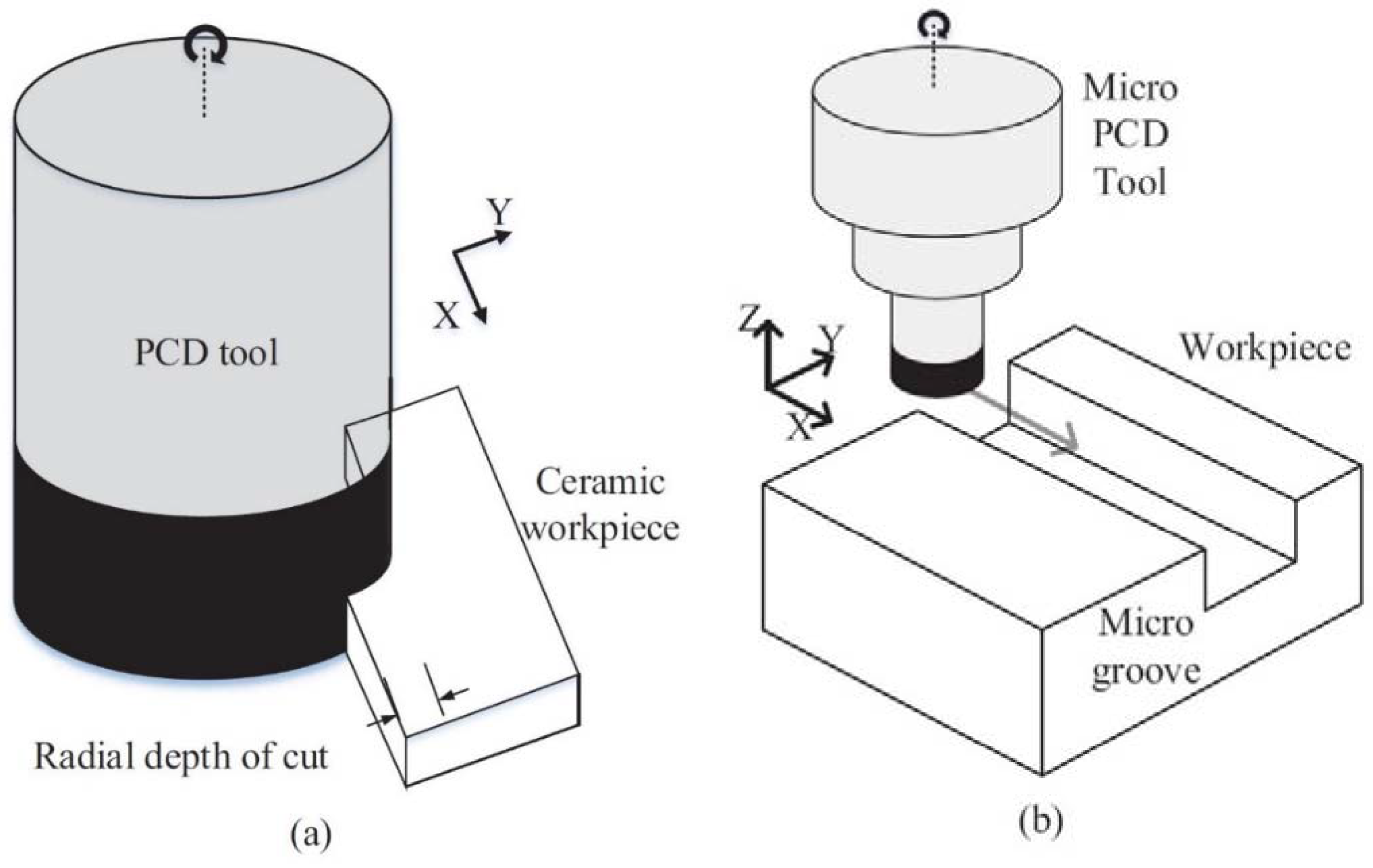
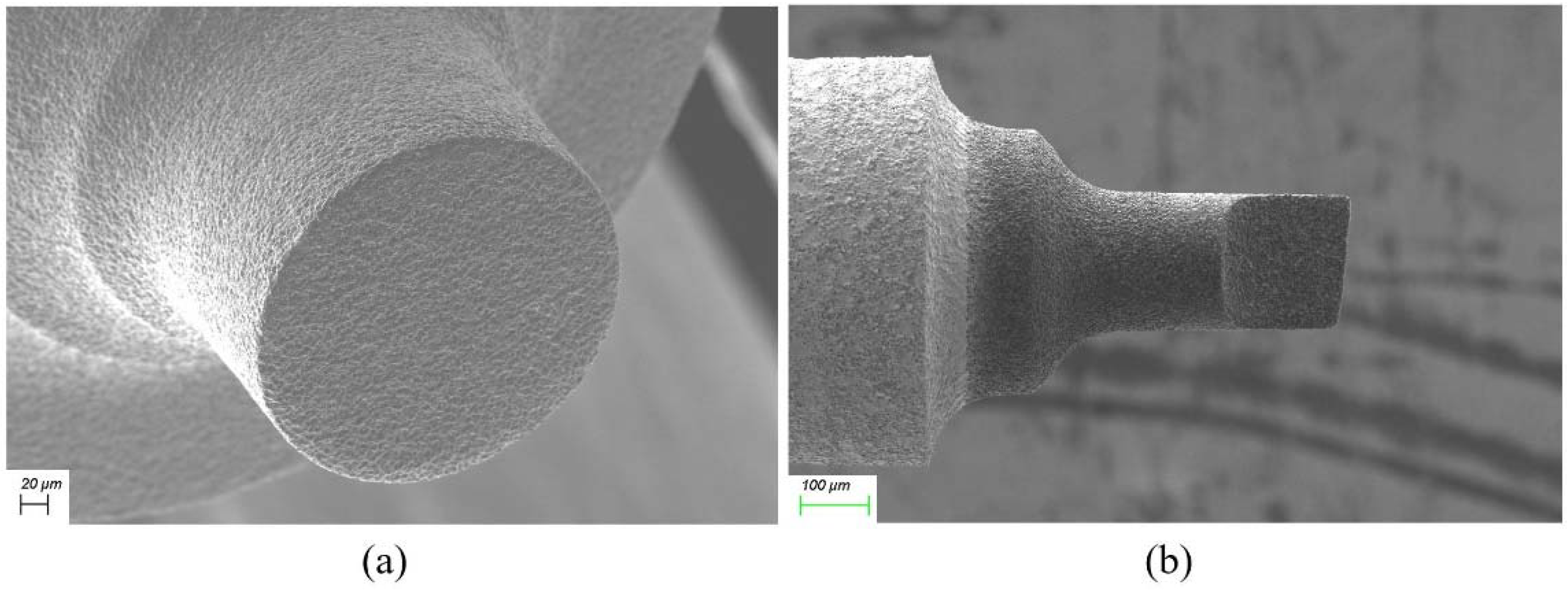
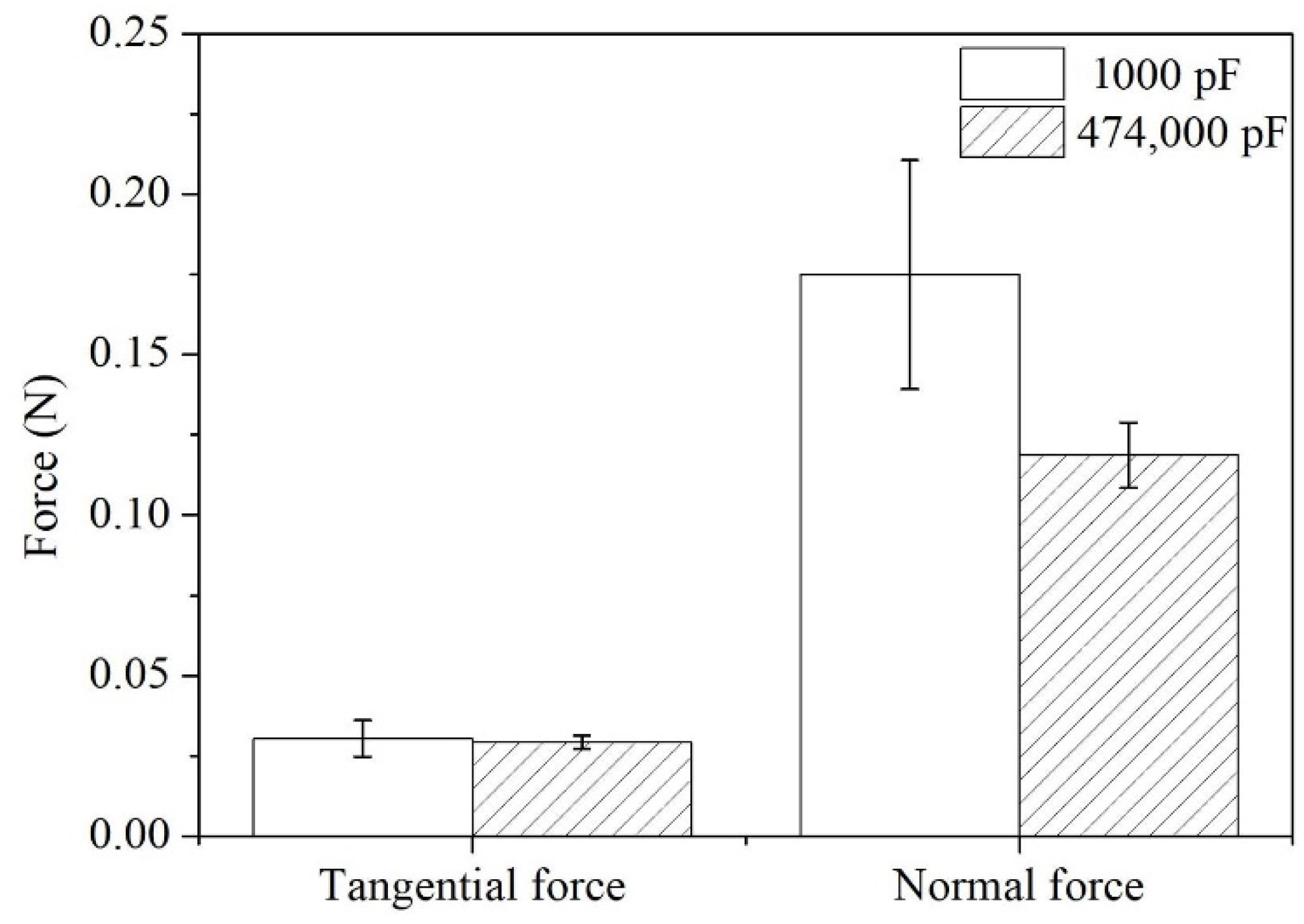

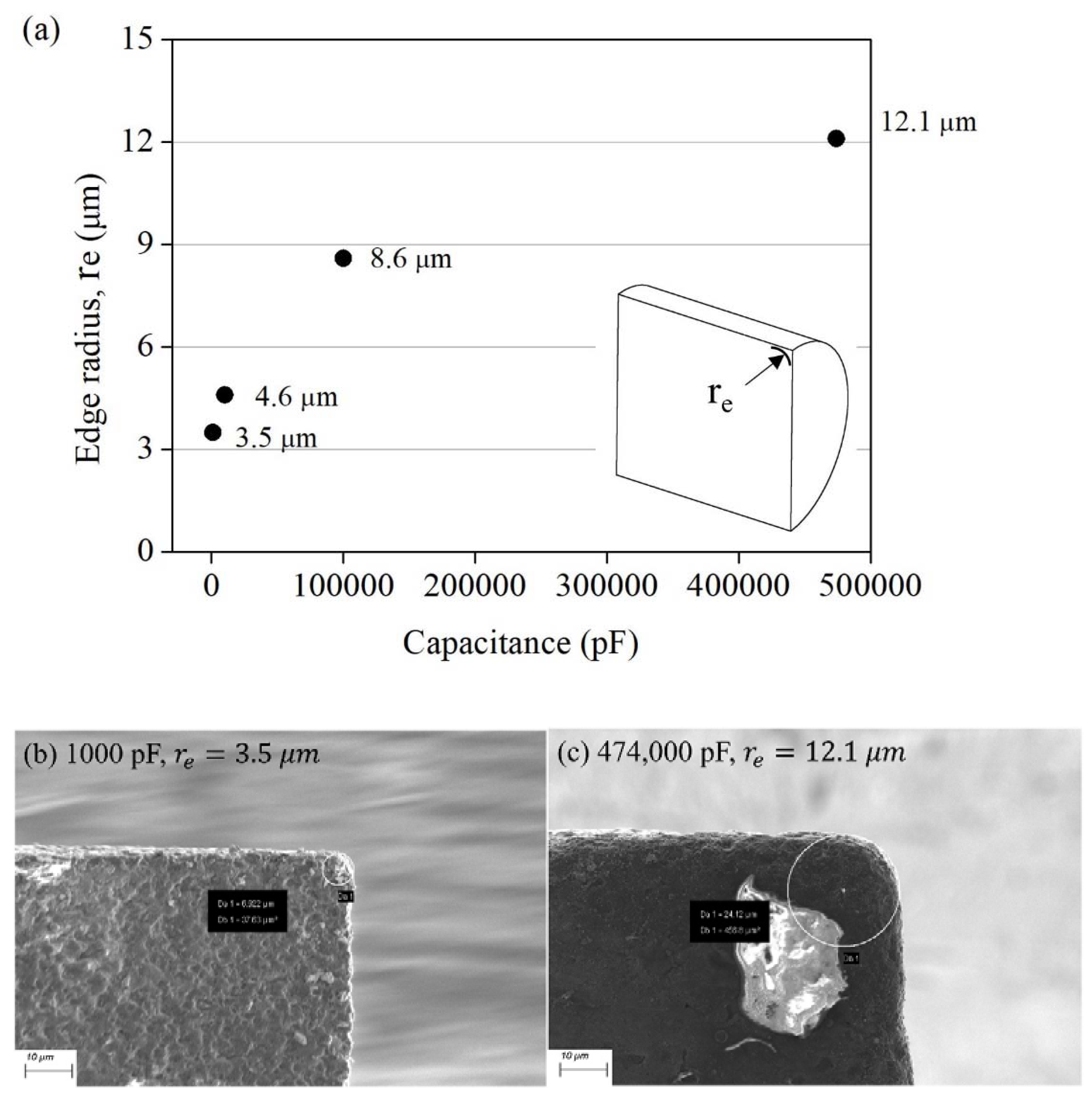
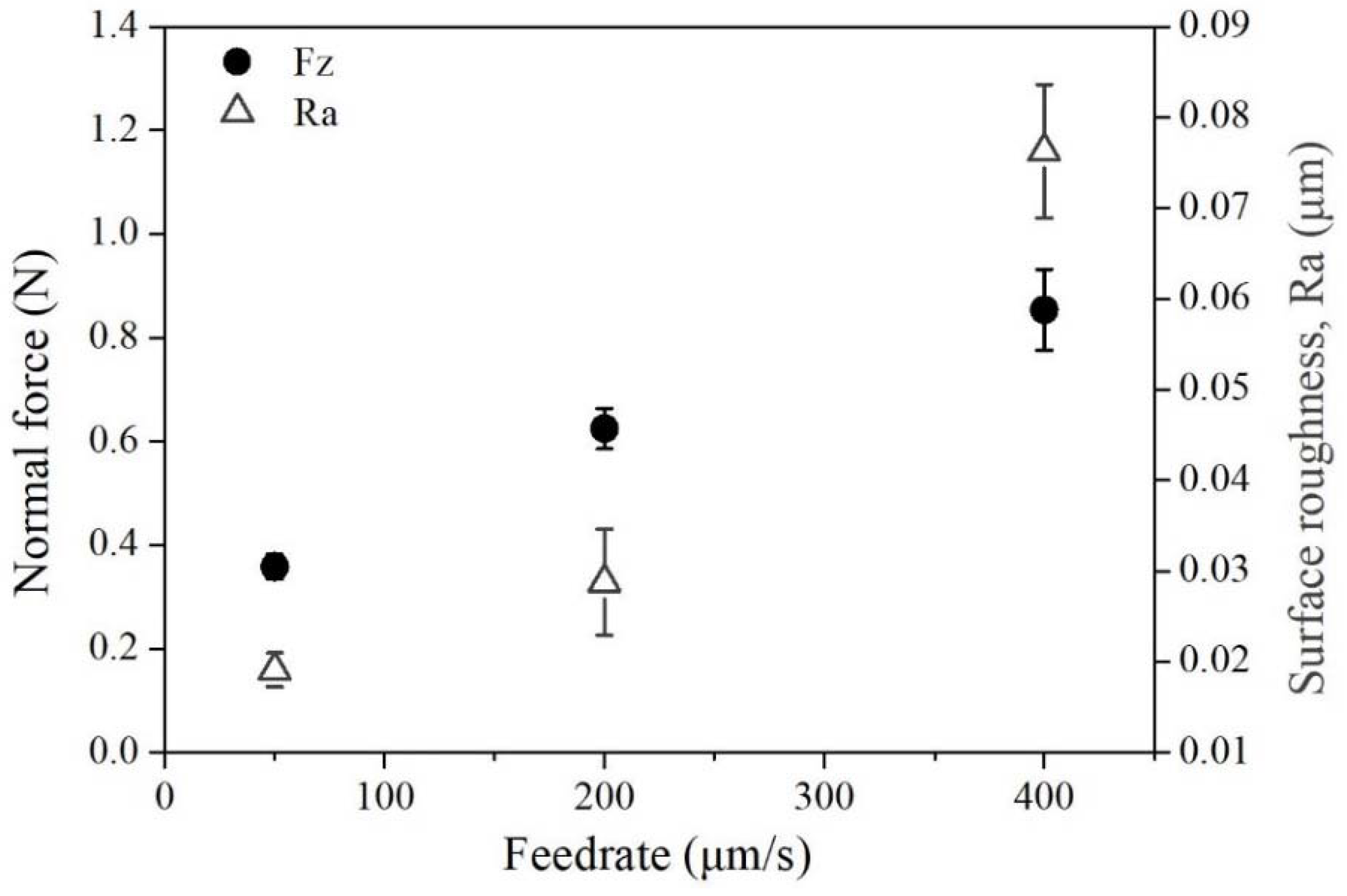
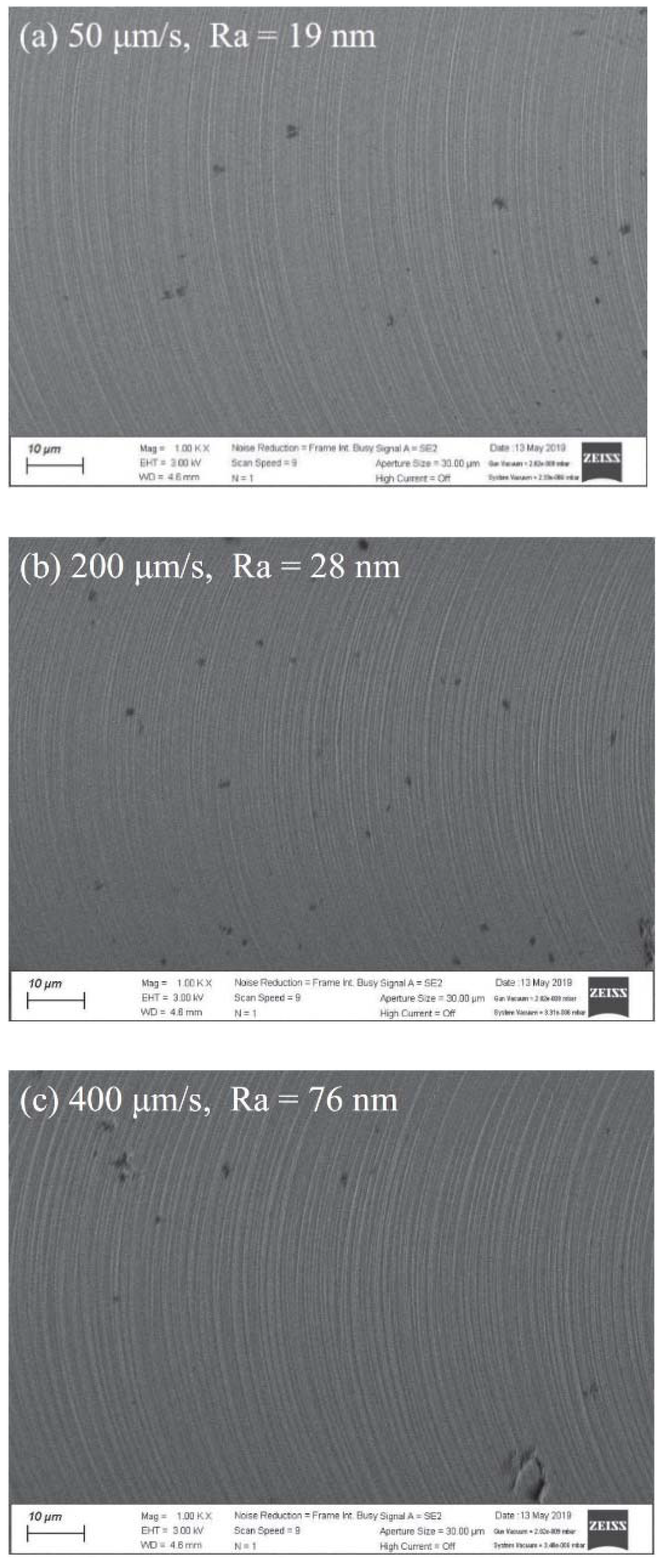
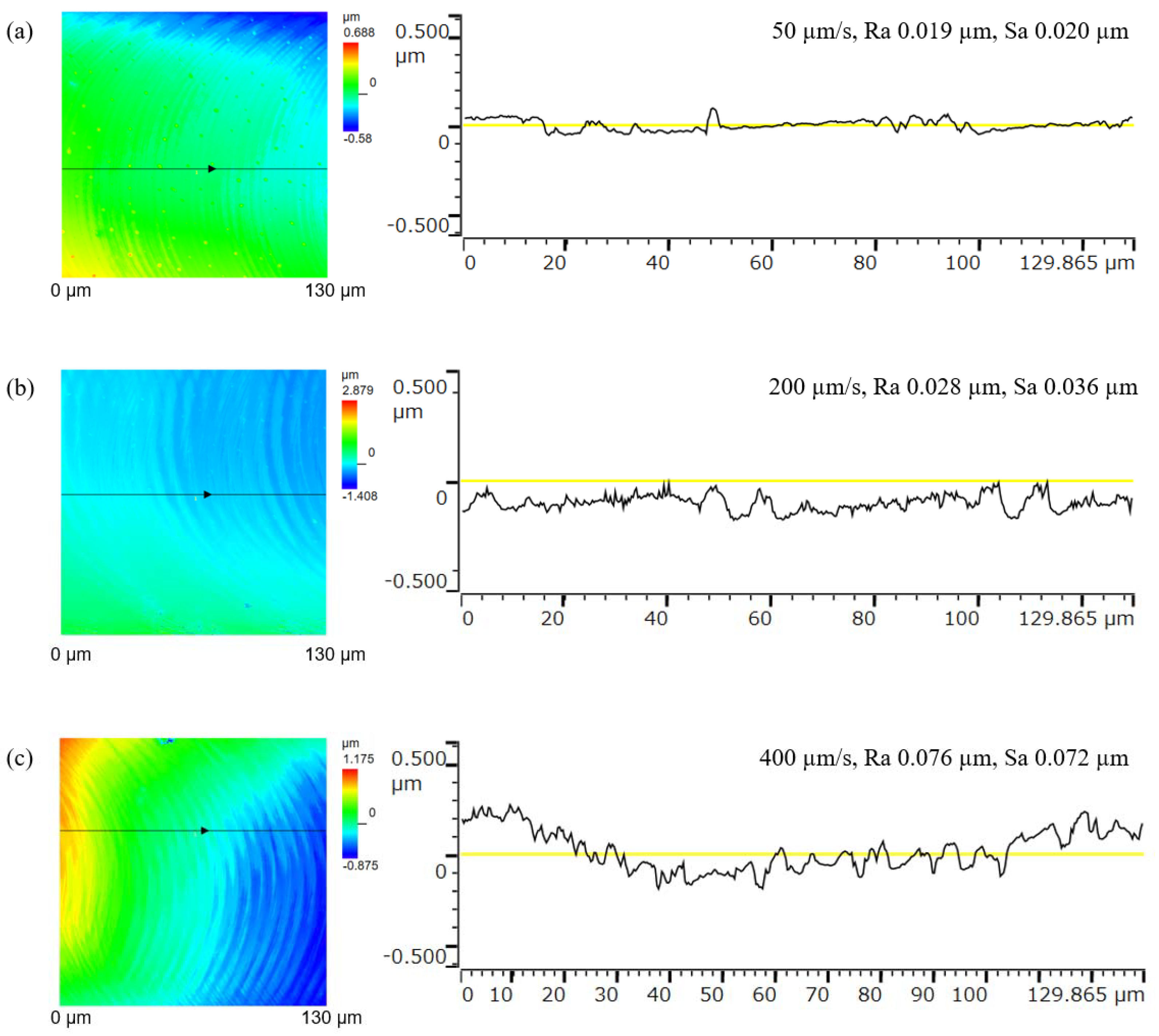
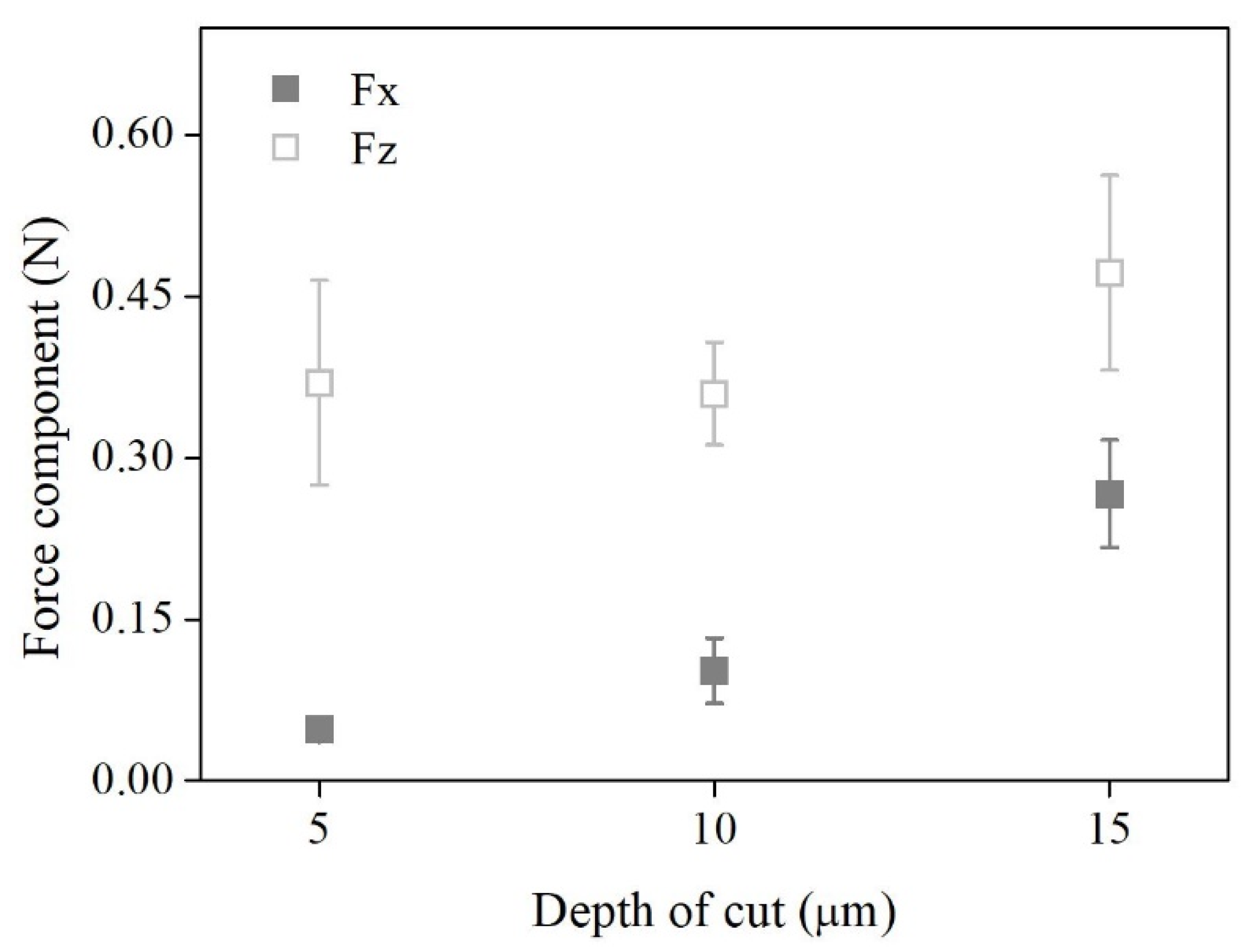
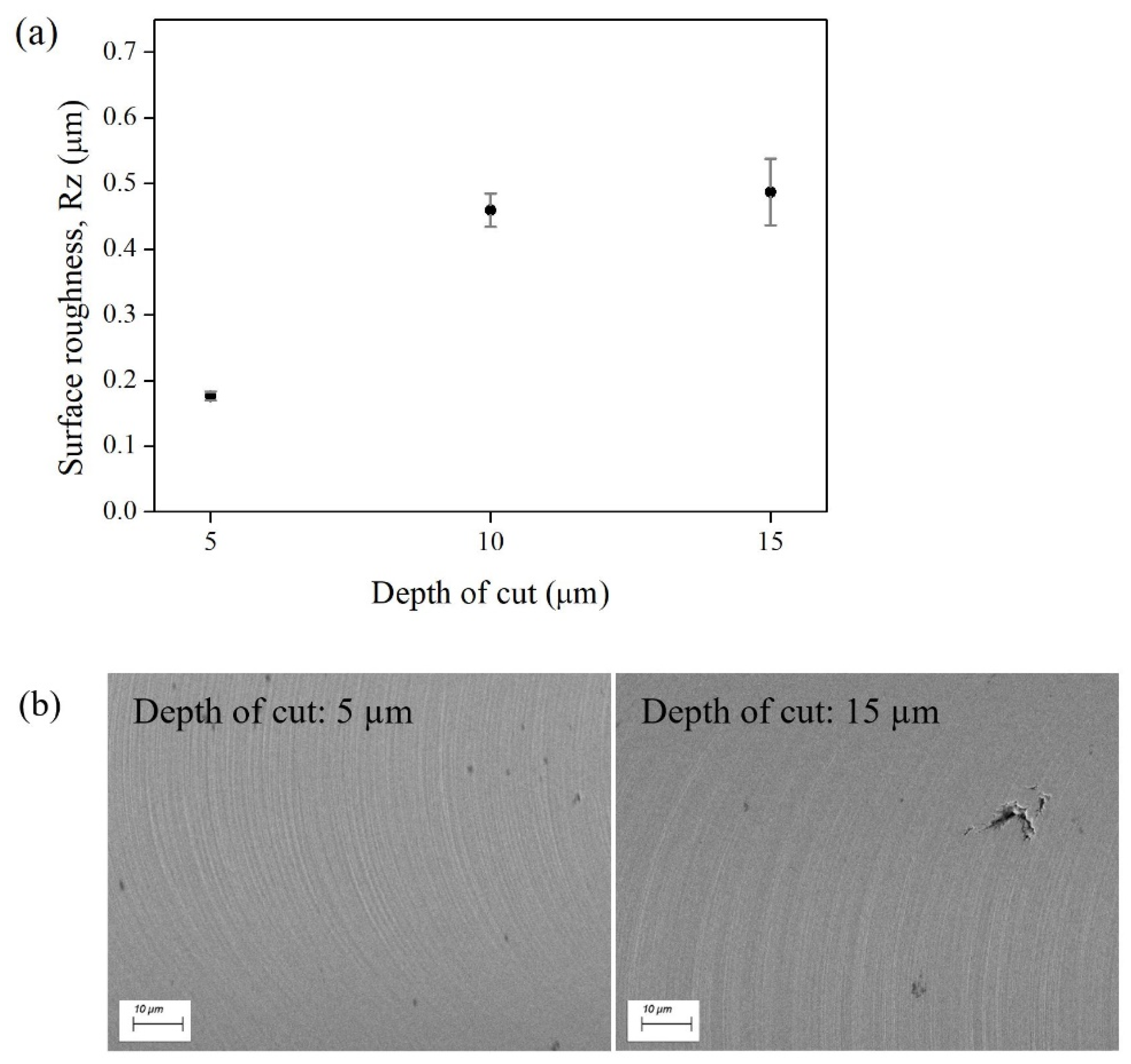
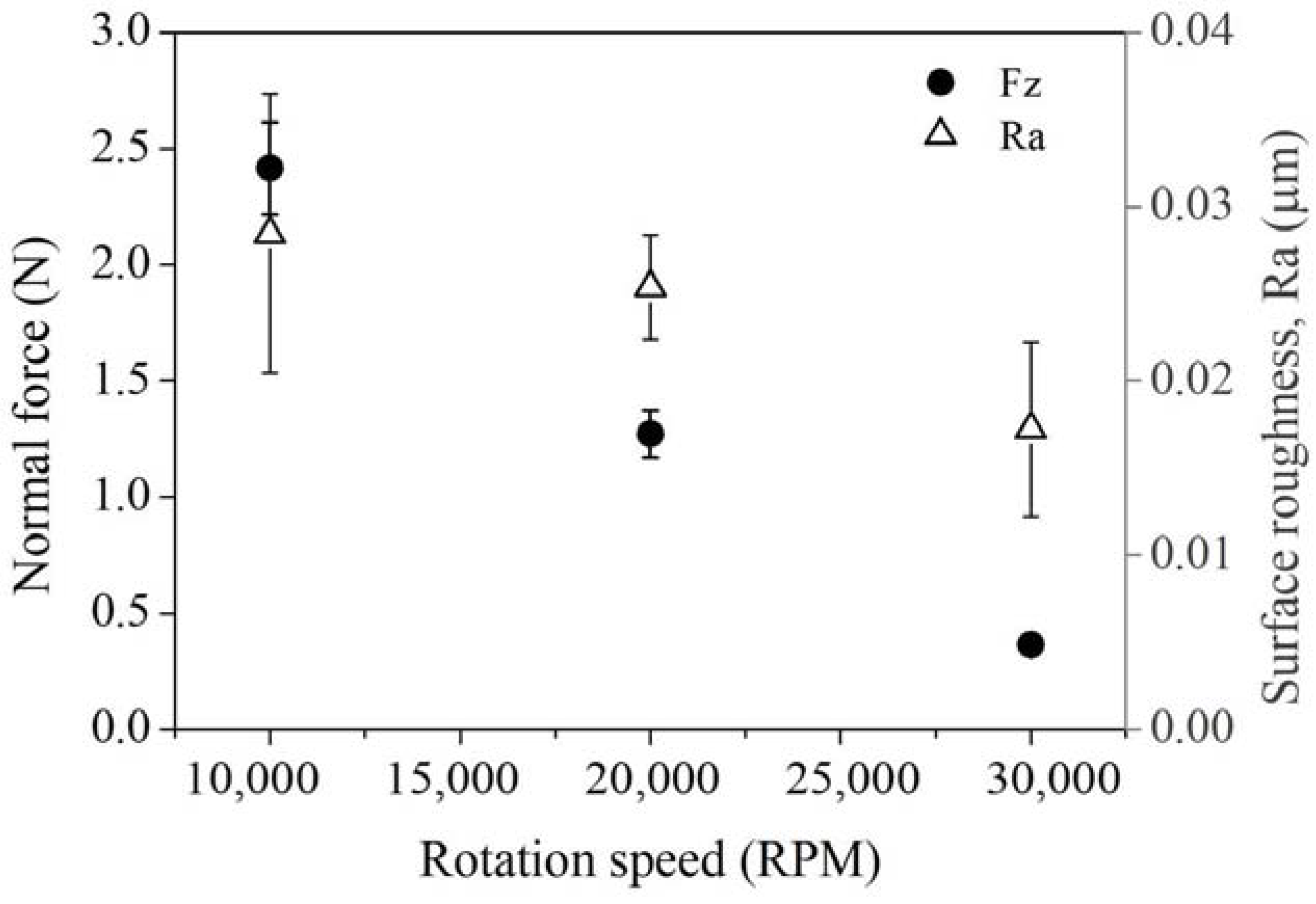
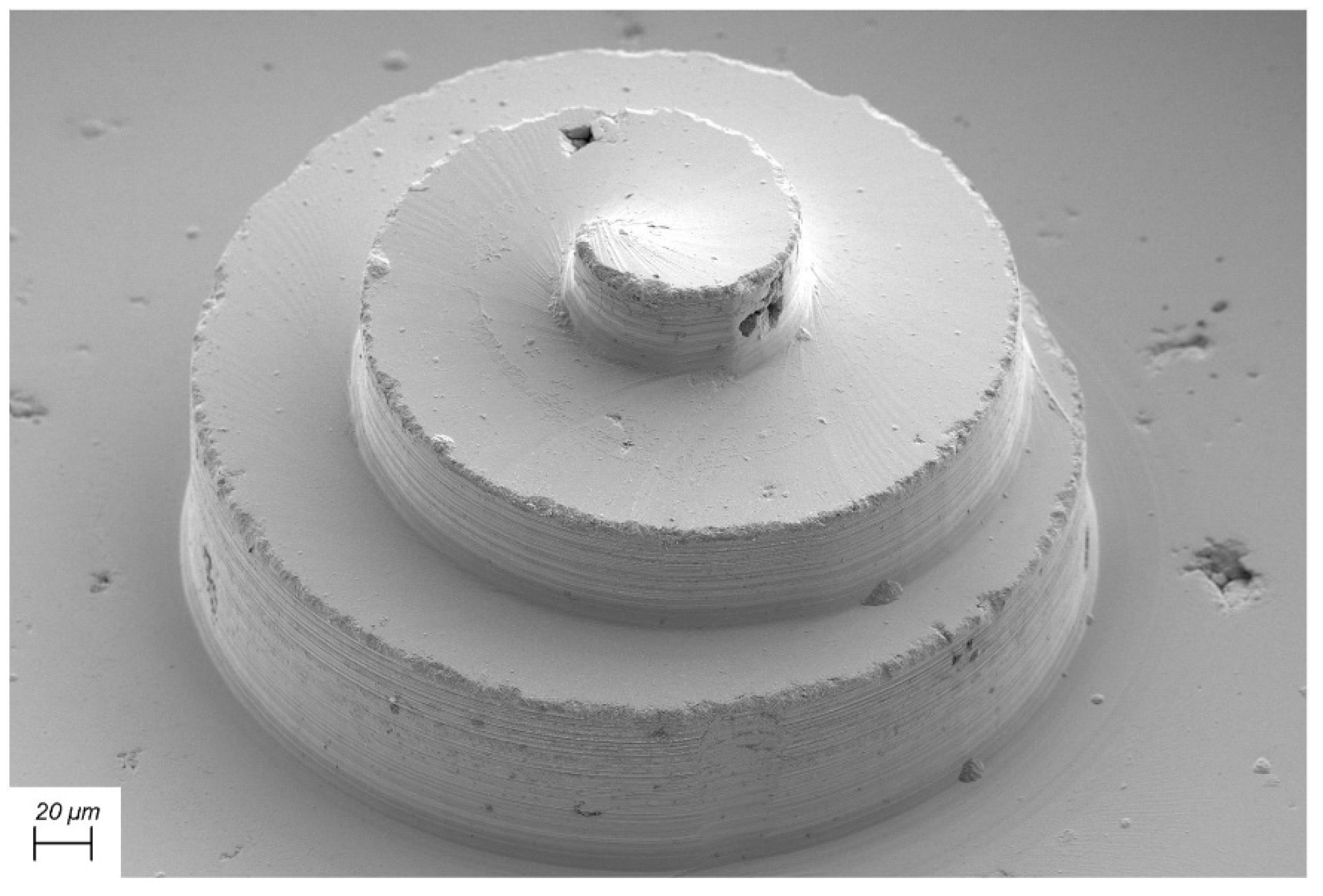
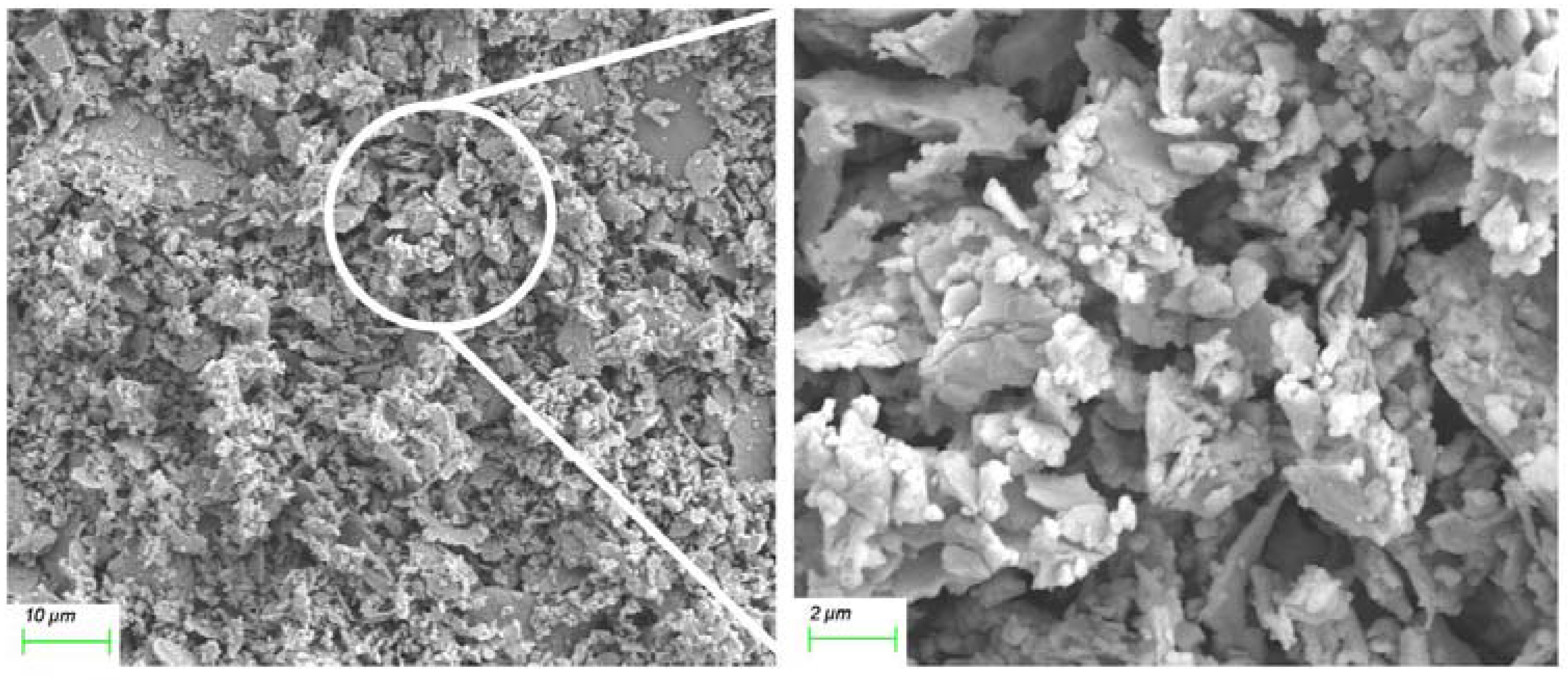
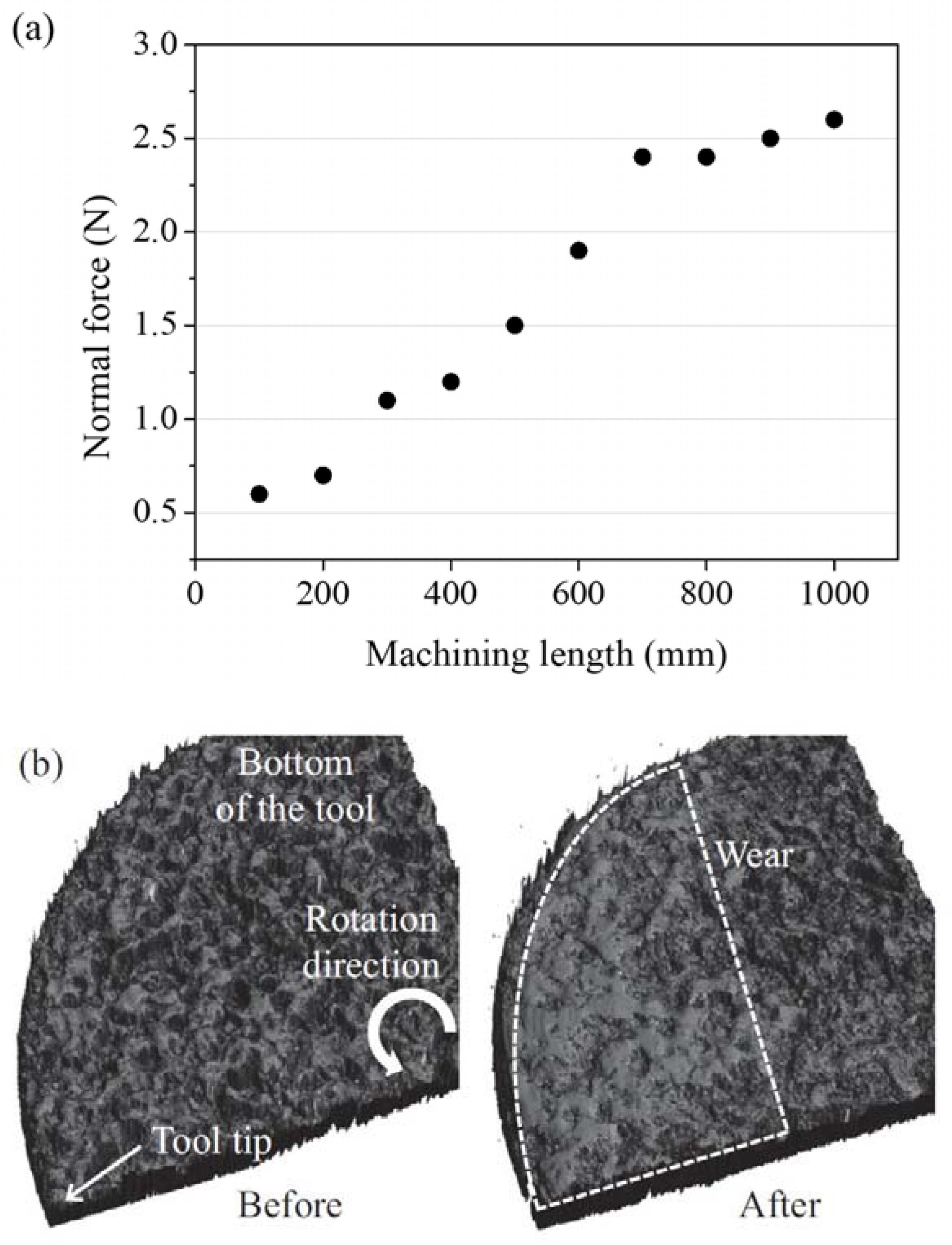
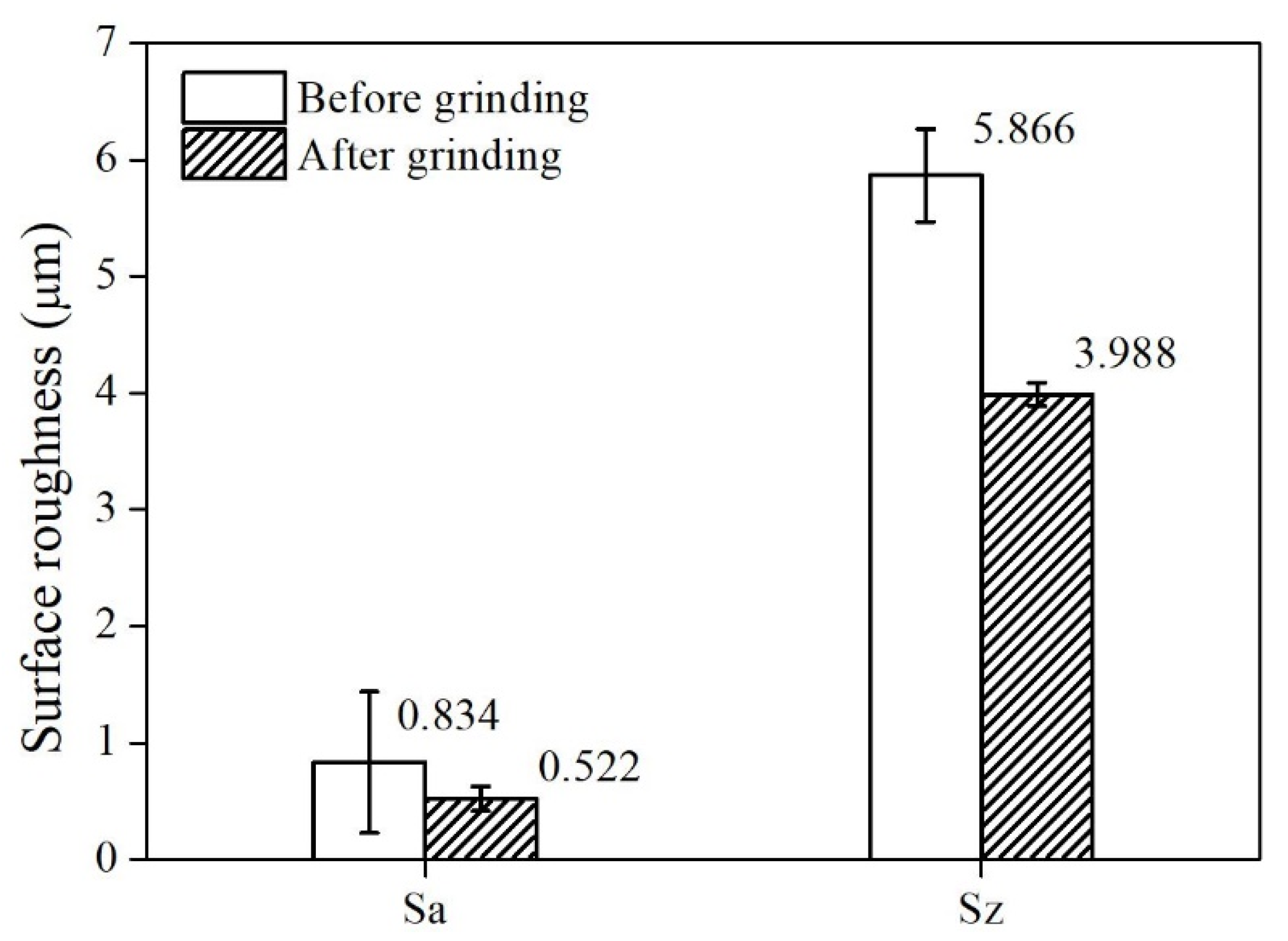
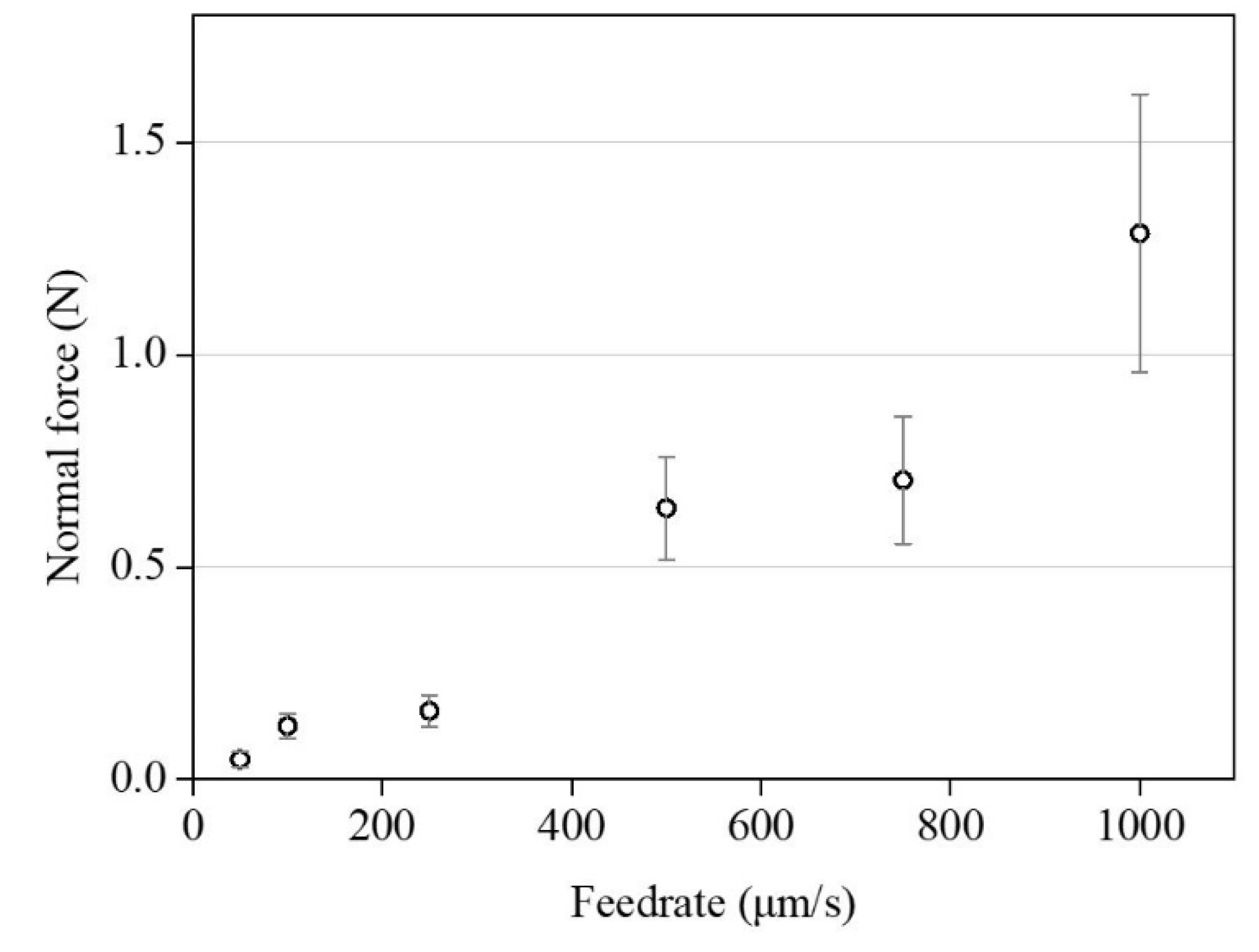

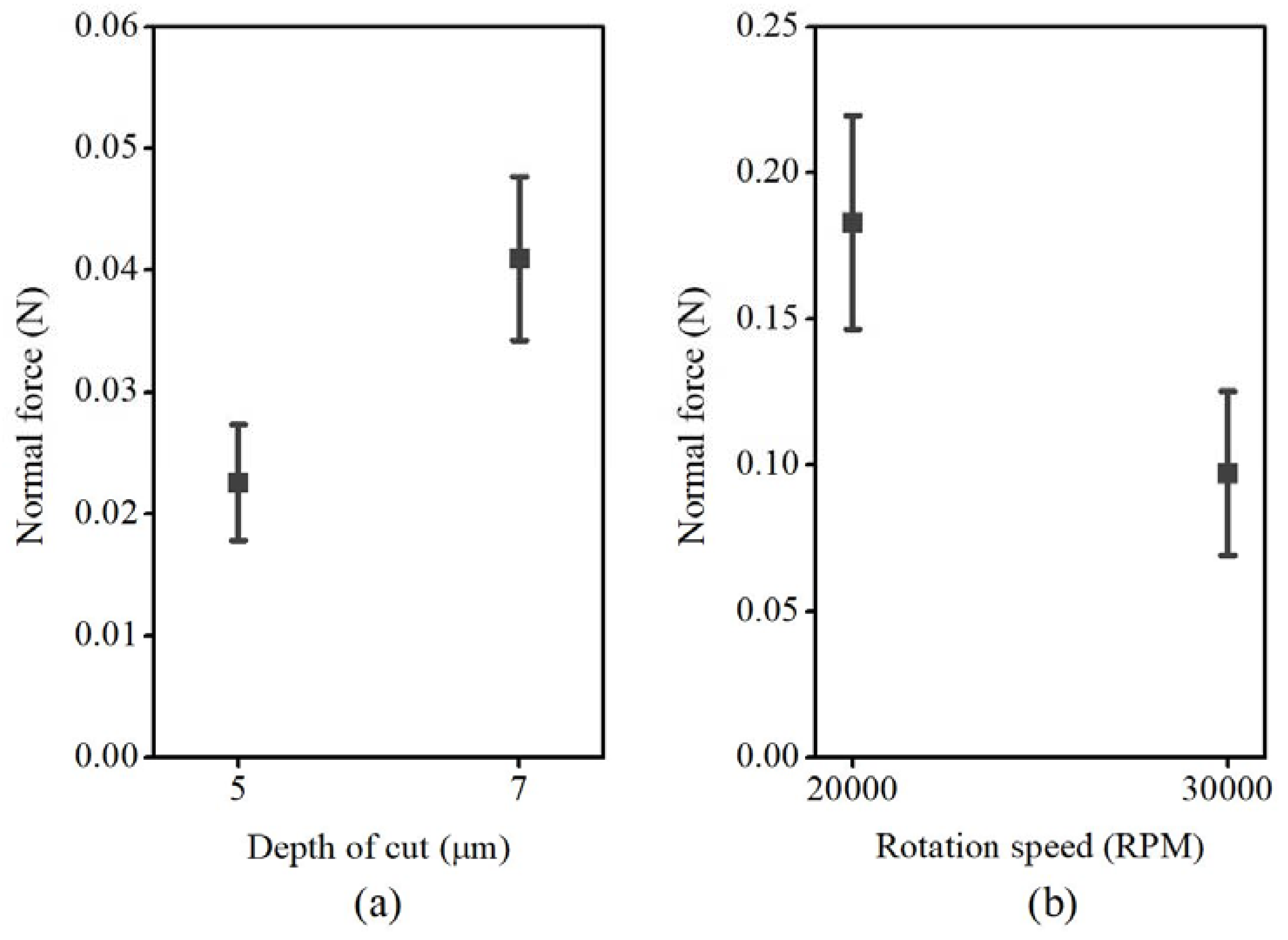
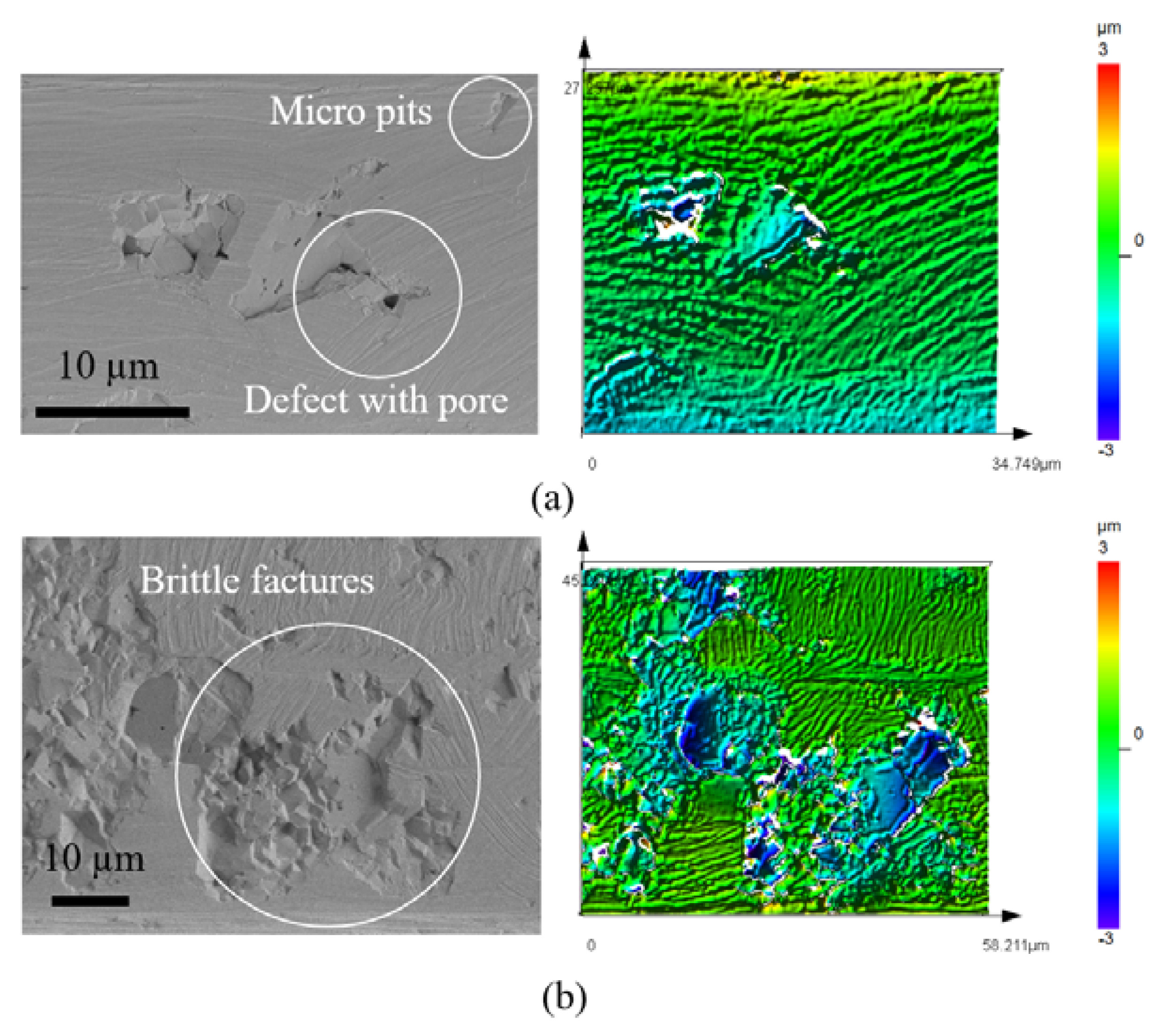
| Material | Vickers Hardness (100 g Load; kg/mm2) |
|---|---|
| PCD | 110–120 |
| Alumina | 18–20 |
| WC-Co | 17–18 |
| Zirconia | 12 |
| Tool material | PCD |
| Tool shape | circular tool of Ø 800 µm |
| Workpiece material | Zirconia |
| Rotation speed (rpm) | 30,000 |
| Feed rate (µm/s) | 250 |
| Radial depth of cut (µm) | 5 |
| Axial depth of cut (µm) | 100 |
| Tool material | PCD |
| Tool shape | D-shaped tool of Ø 200 µm |
| Workpiece material | Zirconia |
| Rotation speed (rpm) | 10,000–30,000 |
| Feed rate (µm/s) | 50–400 |
| Axial depth of cut (µm) | 5–15 |
Publisher’s Note: MDPI stays neutral with regard to jurisdictional claims in published maps and institutional affiliations. |
© 2021 by the authors. Licensee MDPI, Basel, Switzerland. This article is an open access article distributed under the terms and conditions of the Creative Commons Attribution (CC BY) license (https://creativecommons.org/licenses/by/4.0/).
Share and Cite
Na, Y.; Lee, U.S.; Kim, B.H. Experimental Study on Micro-Grinding of Ceramics for Micro-Structuring. Appl. Sci. 2021, 11, 8119. https://doi.org/10.3390/app11178119
Na Y, Lee US, Kim BH. Experimental Study on Micro-Grinding of Ceramics for Micro-Structuring. Applied Sciences. 2021; 11(17):8119. https://doi.org/10.3390/app11178119
Chicago/Turabian StyleNa, Yung, Ui Seok Lee, and Bo Hyun Kim. 2021. "Experimental Study on Micro-Grinding of Ceramics for Micro-Structuring" Applied Sciences 11, no. 17: 8119. https://doi.org/10.3390/app11178119






